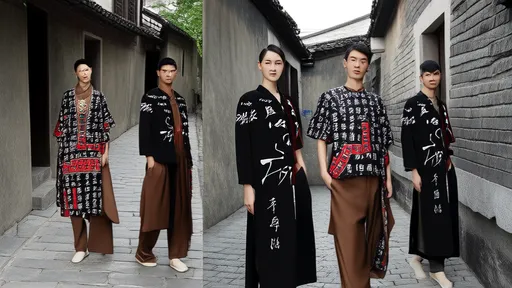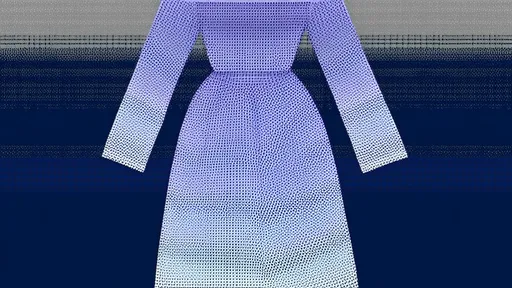In the fast-paced world of fashion retail, few companies have mastered the art of rapid response like SHEIN. The Chinese e-commerce giant has built its empire on a hyper-efficient supply chain and a data-driven approach to trend adoption, allowing it to release thousands of new products weekly. However, this very success has drawn criticism, with detractors pointing to a perceived homogeneity in design—a sea of similar styles that some argue lacks originality. As SHEIN reflects on its fast-fashion model, the question becomes: how does it address these claims of design uniformity while maintaining its competitive edge?
The core of SHEIN's strategy lies in its agile supply chain and real-time data analytics. By monitoring social media trends, search queries, and customer behavior, the company can identify emerging styles almost instantaneously. This information is fed directly to its network of manufacturers, enabling production to begin within days. This system, often referred to as "real-time fashion," minimizes inventory risk and ensures that SHEIN's offerings are always aligned with current consumer desires. Yet, this efficiency comes at a cost: the pressure to produce at volume and speed can sometimes lead to designs that feel derivative, echoing popular trends without significant innovation.
Critics argue that this model prioritizes quantity over creativity, resulting in a catalog where many items look strikingly similar. The prevalence of certain patterns, cuts, and themes across SHEIN's collections has fueled accusations that the brand is contributing to a cycle of sameness in fast fashion. This criticism is not unique to SHEIN—it echoes broader concerns about the industry's environmental and creative sustainability—but as a market leader, SHEIN faces heightened scrutiny. The company's challenge is to balance its operational strengths with a need for greater design distinction.
In response, SHEIN has begun to explore ways to inject more originality into its offerings without sacrificing speed. One approach involves leveraging its vast data capabilities not just to follow trends, but to predict and even shape them. By analyzing niche markets and underserved consumer segments, SHEIN can identify opportunities for unique designs that still have broad appeal. Additionally, the company has started collaborating with independent designers and influencers to create limited-edition collections. These partnerships bring fresh perspectives to SHEIN's portfolio, offering customers exclusive pieces that stand out from the mainstream selections.
Another key initiative is the enhancement of its customization and personalization features. SHEIN has experimented with tools that allow customers to modify elements of their purchases, such as color, length, or detailing. This not only engages consumers in the design process but also creates a sense of individuality in their choices. By empowering users to co-create their styles, SHEIN mitigates the perception of uniformity and fosters a deeper connection with its audience. These efforts signal a shift from purely reactive trend-chasing to a more participatory model of fashion.
Moreover, SHEIN is investing in advanced technologies like artificial intelligence and machine learning to refine its design process. Algorithms can now generate design variations based on successful existing products, introducing subtle changes that refresh styles without completely reinventing them. While this still operates within the framework of data-driven efficiency, it allows for more nuanced iterations that reduce the blatant repetition of designs. The goal is to create a broader array of options that cater to diverse tastes while maintaining the rapid turnaround times that define the brand.
Sustainability concerns also play a role in addressing design criticism. As consumers become more conscious of the environmental impact of fast fashion, SHEIN recognizes that part of its evolution must involve promoting longevity and versatility in its products. By designing pieces that are timeless and adaptable, rather than purely trend-driven, SHEIN can combat accusations of disposability and homogeneity. Initiatives like the SHEIN Exchange, a platform for reselling items, encourage circularity and suggest a growing commitment to responsible fashion—a move that could indirectly elevate the perceived value and uniqueness of its designs.
Despite these steps, the tension between speed and originality remains. SHEIN's business model is inherently built on volume and velocity, and any significant departure from this formula could undermine its market position. However, the company's willingness to adapt its strategies shows a recognition that consumer expectations are changing. Today's shoppers demand not only affordability and variety but also authenticity and individuality. SHEIN's ability to meet these demands will determine its long-term viability in an increasingly competitive landscape.
Looking ahead, SHEIN's response to design homogeneity will likely involve a multifaceted approach: continuing to harness data for smarter design choices, expanding collaborations with creatives, enhancing customer engagement through technology, and embracing more sustainable practices. The journey from being a fast follower to a trendsetter is complex, but for SHEIN, it is a necessary evolution. As the company refines its model, it may well redefine what fast fashion can achieve—balancing efficiency with innovation to create a more diverse and dynamic offering for its global audience.
In conclusion, while criticisms of design sameness are valid, they have prompted SHEIN to reflect and innovate. The brand's efforts to diversify its designs through technology, collaboration, and customer involvement demonstrate a proactive stance against uniformity. By evolving its rapid-response framework to incorporate greater creativity, SHEIN is not just addressing critics—it is future-proofing its business for a new era of fashion retail where uniqueness and sustainability are as important as speed and scale.

By /Aug 21, 2025

By /Aug 21, 2025

By /Aug 21, 2025

By /Aug 21, 2025

By /Aug 21, 2025

By /Aug 21, 2025

By /Aug 21, 2025

By /Aug 21, 2025

By /Aug 21, 2025

By /Aug 21, 2025

By /Aug 21, 2025

By /Aug 21, 2025

By /Aug 21, 2025

By /Aug 21, 2025

By /Aug 21, 2025

By /Aug 21, 2025

By /Aug 21, 2025

By /Aug 21, 2025

By /Aug 21, 2025

By /Aug 21, 2025